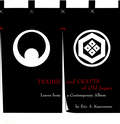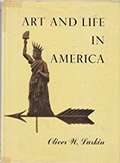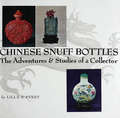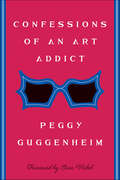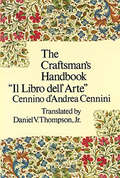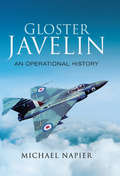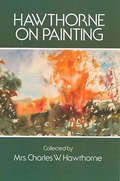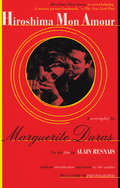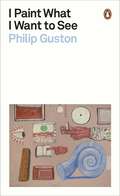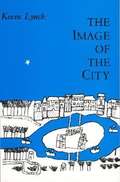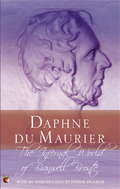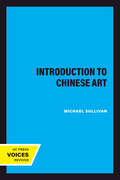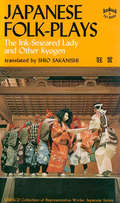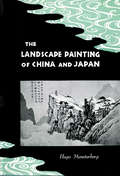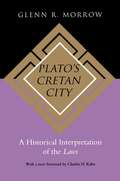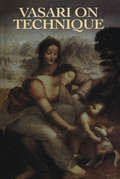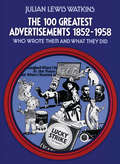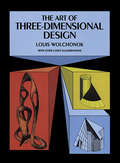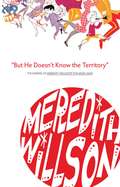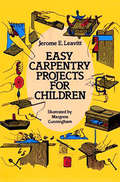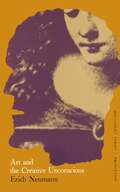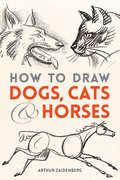- Table View
- List View
Trades and Crafts of Old Japan
by Eric KaemmererThis very rare series of Japanese paintings depicts everyday artisans in feudal Japan. Extensive commentary provides insight into the historical and cultural context of the scenes.More than three centuries ago, not long after Japan had entered the period of seclusion decreed by her Tokugawa rulers, an unknown artist, or perhaps a group of artists, painted a series of pictures for an album portraying contemporary trades and crafts. In creating the scenes that compose this rare relic from Tokugawa days, the anonymous painter left for later ages an invaluable record of everyday human activity in the utilitarian arts for which Japan has long been famous. It is these pictures, carefully reproduced in collotype and color and accompanied by Eric Kaemmerer's perceptive comments, that make up the present volume.These scenes of Japanese life in the early 17th century introduce a variety of craftsmen ranging from needlemaker to swordsmith, from fanmaker to carpenter, from the creator of fragile lacquer ware to the fashioner of sturdy barrels. Their trades and crafts, many of which are still carried on with little change in present-day Japan, are portrayed with painstaking attention to detail and with a decided feeling for human interest.
Trades and Crafts of Old Japan
by Eric KaemmererThis very rare series of Japanese paintings depicts everyday artisans in feudal Japan. Extensive commentary provides insight into the historical and cultural context of the scenes.More than three centuries ago, not long after Japan had entered the period of seclusion decreed by her Tokugawa rulers, an unknown artist, or perhaps a group of artists, painted a series of pictures for an album portraying contemporary trades and crafts. In creating the scenes that compose this rare relic from Tokugawa days, the anonymous painter left for later ages an invaluable record of everyday human activity in the utilitarian arts for which Japan has long been famous. It is these pictures, carefully reproduced in collotype and color and accompanied by Eric Kaemmerer's perceptive comments, that make up the present volume.These scenes of Japanese life in the early 17th century introduce a variety of craftsmen ranging from needlemaker to swordsmith, from fanmaker to carpenter, from the creator of fragile lacquer ware to the fashioner of sturdy barrels. Their trades and crafts, many of which are still carried on with little change in present-day Japan, are portrayed with painstaking attention to detail and with a decided feeling for human interest.
Art and Life in America
by Oliver W. LarkinThe history of art in America.<P><P> Pulitzer Prize Winner
Artists At Work
by Bernard ChaetChaet explores the relationship between an artist's materials and technique, and the forms in which he expresses his vision. He shows that technique and vision are inseparable.
Chinese Snuff Bottles
by Lilla S. PerryThis title was originally published in print form by Tuttle Publishing in 1960This book is not only an invaluable document for all interested in the history of Chinese art, but also a lucid and fascinating guidebook for the collector or would be collector, both of snuff bottles and other products of Chinese craftsmanship.
Confessions of an Art Addict
by Peggy GuggenheimA patron of art since the 1930s, Peggy Guggenheim, in a candid self-portrait, provides an insider's view of the early days of modern art, with revealing accounts of her eccentric wealthy family, her personal and professional relationships, and often surprising portrayals of the artists themselvesPeggy Guggenheim was born into affluence and a lavish lifestyle. Bored with her seemingly "pedestrian" life in New York, she headed for Europe in 1921, where she woudl sow the seeds for a future as one of modern art's most important and influential figures.In the midst of Europe's avant-garde circles, she reveled in her love affairs with prominent artists and also became a serious collector. Her Guggenheim Jeune gallery in London brought figures such as Brancusi, Cocteau, Kandinsky, and Arp to the forefront of the art scene. Later, her New York gallery would launch the careers of Jackson Pollock and Robert Motherwell, among others.In her own inimitable and bawdy style, Peggy Guggenheim gives us an insider's glimpse into the modern art world with intimate, often surprising portrayals of its most significant players. Candid, clever, and always entertaining, here is a memoir that captures a valuable chapter in the history of modern art, as well as the spirit of one of its greatest advocates.
The Craftsman's Handbook
by Cennino CenniniThis is D. V. Thompson's definitive English translation of Il Libro dell'Arte, an intriguing guide to methods of painting, written in fifteenth-century Florence. Embodying the secrets and techniques of the great masters, it served as an art student's introduction to the ways of his craft.Anyone who has ever looked at a medieval painting and marveled at the brilliance of color and quality of surface that have endured for 500 years should find this fascinating reading. It describes such lost arts as gilding stone, making mosaics of crushed eggshell, fashioning saints' diadems, coloring parchment, making goat glue, and regulating your life in the interests of decorum -- which meant shunning women, the greatest cause of unsteady hands in artists. You are told how to make green drapery, black for monks' robes, trees and plants, oils, beards in fresco, and the proper proportions of a man's body. ("I will not tell you about the irrational animals because you will never discover any system of proportion in them.") So practical are the details that readers might be tempted to experiment with the methods given here for their own amusement and curiosity.Today artists are no longer interested in specific directions on keeping miniver tails from becoming moth-eaten. The Craftsman's Handbook, in which these are ordinary parts of the artist's work, appears quaint and naïve to us. And that is much of its charm. But when we remember the magnificent mosaics, paintings, and frescoes these methods produced, the book takes on an even greater value as a touchstone to another age."Recommended to the student of art." -- Craft Horizons."Obviously of great merit." -- Art Material Trade News."Delightful flavor." -- New York Herald Tribune.Recommended in Harvard List of Great Books on Art, Shaw's List of Books for College Libraries.
Gloster Javelin: An Operation History
by Michael NapierThe RAFs only delta-winged fighter the Gloster Javelin was also Britains first true All-Weather Fighter. Based in the UK and in Germany, the RAFs Javelin squadrons formed the front line of Britains air defences in the late 1950s and early 1960s. During this time Javelin crews pioneered the operational use of guided missiles and air-to-air refuelling by fighter aircraft. In the Far East, Javelins were involved in operations during the Indonesian Confrontation and the aircraft was also deployed to Zambia during the Rhodesian UDI Crisis. In this history, which is richly illustrated with many previously unpublished photographs, Michael Napier blends official records with personal accounts to describe the operational history of this iconic jet fighter.
Hawthorne on Painting (Dover Art Instruction)
by Charles W. HawthorneBorn in 1872, Charles Webster Hawthorne was an American portrait painter who founded the Cape Cod School of Art. This work, collected from notes taken by his actual students at the school, offers hundreds of direct lessons, ideas, suggestions, and more.
Hiroshima Mon Amour: A Screenplay (Facile A Lire Ser. #No. 9)
by Marguerite DurasOne of the most influential works in the history of cinema, Alain Renais's Hiroshima Mon Amour gathered international acclaim upon its release in 1959 and was awarded the International Critics' Prize at the Cannes Film festival and the New York Film Critics' Award. Ostensibly the story of a love affair between a Japanese architect and a French actress visiting Japan to make a film on peace, Hiroshima Mon Amour is a stunning exploration of the influence of war on both Japanese and French culture and the conflict between love and inhumanity.
I Paint What I Want to See (Penguin Modern Classics)
by Philip GustonIlluminating reflections on painting and drawing from one of the most revered artists of the twentieth century'Thank God for yellow ochre, cadmium red medium, and permanent green light'How does a painter see the world? Philip Guston, one of the most influential artists of the twentieth century, spoke about art with unparalleled candour and commitment. Touching on work from across his career as well as that of his fellow artists and Renaissance heroes, this selection of his writings, talks and interviews draws together some of his most incisive reflections on iconography and abstraction, metaphysics and mysticism, and, above all, the nature of painting and drawing.'Among the most important, powerful and influential American painters of the last 100 years ... he's an art world hero' Jerry Saltz, New York Magazine'Guston's paintings make us think hard' Aindrea Emelife, Guardian
The Image of the City
by Kevin LynchWhat does the city's form actually mean to the people who live there? What can the city planner do to make the city's image more vivid and memorable to the city dweller? To answer these questions, Mr. Lynch, supported by studies of Los Angeles, Boston, and Jersey City, formulates a new criterion -- imageability -- and shows its potential value as a guide for the building and rebuilding of cities. The wide scope of this study leads to an original and vital method for the evaluation of city form. The architect, the planner, and certainly the city dweller will all want to read this book.
The Infernal World Of Branwell Bronte (Virago Modern Classics #126)
by Daphne Du MaurierFROM THE BESTSELLING AUTHOR OF REBECCAAs a bold and gifted child, Branwell Bronte's promise seemed boundless to the three adoring sisters over whom his rule was complete. But as an adult, the precocious flame of genius distorted and burned low.With neither the strength nor the resources to counter rejection, unable to sell his paintings or publish his books, Branwell became a spectre in the Bronte story, in pathetic contrast with the astonishing achievements of his sisters.Daphne du Maurier concentrates all her biographer's skill on the shadowy figure of Branwell Bronte, and no reader could fail to be intensely moved by Branwell's final retreat into laudanum, alcohol - and death
An Introduction to Chinese Art
by Michael SullivanThis title is part of UC Press's Voices Revived program, which commemorates University of California Press’s mission to seek out and cultivate the brightest minds and give them voice, reach, and impact. Drawing on a backlist dating to 1893, Voices Revived makes high-quality, peer-reviewed scholarship accessible once again using print-on-demand technology. This title was originally published in 1960.This title is part of UC Press's Voices Revived program, which commemorates University of California Press’s mission to seek out and cultivate the brightest minds and give them voice, reach, and impact. Drawing on a backlist dating to 1893, Voices Revived</DIV
Japanese Folk Plays: The Ink Smeared Lady and Other Kyogen
by Shio SakanishiThis collection of Japanese folk plays reveals a previously unknown and decidedly unaristocratic element to Japanese theater.<P><P>Interspersed between the stately, slower paced dramas of Japan's Noh theater are the delightful comic plays or interludes known as Kyogen. These brief plays evolved from the bawdy skits that were rousingly enjoyed by the plebeian populaces of the cities in feudal Japan some hundreds of years ago when Noh itself was a pastime and entertainment exclusively reserved for the aristocracy.Today they still provide delightful relief from the sustained and concentrated action of the Noh play that has changed very little throughout the centuries. Among the various forms of classical Japanese drama, the flamboyant action and brilliant coloring Kabuki has perhaps enabled it to be the most easily understood; and the Noh, in a number of excellent translations, has become widely known for its poetic beauty. But the Kyogen, equally deserving of attention, have remained relatively unknown. Only now, with this new edition of Miss Sakanishi's excellent translations, are they at last readily available to the Western reader.
The Landscape Painting of China and Japan
by Hugo MunsterbergThe Landscape Painting of China and Japan presents for the first time in English a full and lucid account of the remarkable art form which, as a distinct tradition in Oriental art, has come to be universally recognized as one of the greatest in the world. <P><P>The author points out how essential it is to an understanding of the Orient when he says: "In China alone, landscape painting has religious as well as philosophical significance...and in consequence is one of the great manifestations of the human spirit, as well as the most remarkable creation of the Chinese artistic genius." And it was this same artistic tradition which, brought to Japan, was transmuted by the intense Japanese love of nature into paintings that "for sheer beauty of color and design have few equals," leading at last to the simplicity and grandeur of the uniquely Japanese woodblock print.Writing for scholar and layman alike, the author carefully traces the evolution of the art throughout its long history, discusses the major artistic personalities against their cultural backgrounds, and systematically describes the development and forms of the landscape. The text is thoroughly illustrated with over a hundred carefully selected plates and a colored frontispiece.
Plato's Cretan City: A Historical Interpretation of the Laws
by Glenn R. MorrowPlato's Cretan City is a thorough investigation into the roots of Plato's Laws and a compelling explication of his ideas on legislation and social institutions. A dialogue among three travelers, the Laws proposes a detailed plan for administering a new colony on the island of Crete. In examining this dialogue, Glenn Morrow describes the contemporary Greek institutions in Athens, Crete, and Sparta on which Plato based his model city, and explores the philosopher's proposed regulations concerning property, the family, government, and the administration of justice, education, and religion. He approaches the Laws as both a living document of reform and a philosophical inquiry into humankind's highest earthly duty.
Vasari on Technique: Being The Introduction To The Three Arts Of Design, Architecture, Sculpture and Painting, Prefixed to the Lives of the Most Excellent Painters, Sculptors and Architects (Dover Art Instruction)
by Giorgio VasariGiorgio Vasari (1511–1571) is well known for his celebrated work on the lives of the Renaissance artists. But not many people know that Vasari was a painter and architect as well as a biographer, and that he wrote one of the most valuable treatises on the technical methods of the painters, architects, and sculptors of his time. This is the first and only English translation of this important technical material (originally published in 1550 as an introduction to Vasari's Lives of the Artists).Vasari, as a practical craftsman, brings to his work as unusual understanding of the processes and materials he writes about, and conveys this knowledge to the reader in a style of the pleasantest and most readable kind. In the section on architecture, he describes the methods used in constructing rustic fountains and grottos; how Michelangelo developed new uses for architectural materials; the architectural uses of enriched plaster; the Renaissance view of Ionic, Doric, Gothic, and other types of architecture; and many similar topics.In the selection on sculpture, the reader will learn about the making of the model, completion of the statue, reliefs, bronze casting, modelled plaster work, sculpture in wood, and other processes. The final section, on painting, discusses aesthetics, perspective, foreshortening, how colors were blended, fresco painting, painting in tempera, oil painting, and much more.Scholars and historians of art have long used this book as the most detailed and valuable sourcebook of its time. But its full, readable discussions, combined with the sense of actuality and historical presence it contains, make it also perhaps the best possible description of the Renaissance artists in the heyday of their achievement.
Vitruvius: The Ten Books on Architecture
by Morris Hicky MorganFor the first time in more than half a century, Vitruvius' Ten Books on Architecture is being published in English. The only full treatise on architecture and its related arts to survive from classical antiquity, the Architecture libri decem (Ten Books on Architecture) is the single most important work of architectural history in the Western world, having shaped architecture and the image of the architect from the Renaissance to the present. Demonstrating the range of Vitruvius' style, this new edition includes examples from archaeological sites discovered since World War II and not previously published in English language translations. Rowland's new translation and Howe's critical commentary and illustrations provide a new image of Vitruvius, who emerges as an inventive and creative thinker, rather than the normative summarizer, as he was characterized in the Middle Ages and Renaissance.
The 100 Greatest Advertisements 1852-1958: Who Wrote Them and What They Did
by Julian WatkinsStyles in advertising will change, but there is no copywriter, artist, or campaign planner who will not profit by studying proved successes, whether of 50 years ago or today. In this single volume are 100 of what are probably among the most successful advertisements ever to appear in print, plus an additiional 13 added especially for this edition. These 113 ads are proven salesmen-almost every one had phenomenal results. They have not been included because of personal whim, or for their beauty. The ultimate criterion here is the only one that really counts: whether an ad did what it was supposed to do. These ads helped change the habits of a nation, built reputations, gave new expressions to the language and-first and foremost-sold millions of dollars of merchandise, from Rolls Royce automobiles to Lux Soap, from Riviera Pears to Steinway Pianos. You learn the salient facts behind these ads as well, often expressed in the words of the originator himself. Men who understood intuitively the workings of mass persuasion techniques long before they became widespread describe their own thoughts, reasonings, and hunches. Earnest Elmo Calkins tells about his experiences in creating Phoebe Snow for the Lackawanna Railroad. Bruce Barton tells about his work on the "Five Foot Shelf" ad, which increased eight-fold the number of coupons received. David Ogilvy describes his campaigns for Hathaway Shirts and Rolls Royce. Raymond Rubicam tells of Squibb's "Priceless Ingredient." More than 100 ads tell better than any textbook or professional analysis exactly what is the secret ingredient that makes an ad "click" when a thousand others fail.
The Art of Three-Dimensional Design (Dover Art Instruction)
by Louis WolchonokProfusely illustrated guide shows how basic shapes and surfaces -- plane, prismatic, cylindric, conical, spherical, and more -- can be adapted and combined to create hundreds of new designs. Applications are endless. Also covers properties of various materials, tools, collaborating with other designers, more. Over 100 illustrations.
But He Doesn't Know the Territory
by Meredith WillsonComposer Meredith Willson once described The Music Man as "an Iowan's attempt to pay tribute to his home state." Never once forgetting his roots, Willson reflects on the ups and downs, surprises and disappointments, and finally successes of the making of one of America's most popular musicals. His whimsical, personable writing style will bring readers back in time with him to the 1950s to experience firsthand the exciting trials and tribulations of creating a Broadway masterpiece. A newfound admiration for The Music Man--and the man behind the music--is sure to follow.
Easy Carpentry Projects for Children (Dover Children's Activity Books)
by Jerome E. Leavitt"All projects have been pretested for school use and are suitable for youngsters." — Bulletin of National Association of Secondary School Principals.What better way to learn than by doing? This thoughtfully conceived woodworking primer by educator Jerome E. Leavitt makes learning basic carpentry skills enjoyable and rewarding for boys and girls ages 8 and up. With special sections on basic hand tools, squaring a block of wood, and wood finishing, this unique how-to book presents step-by-step instructions for making 15 popular wooden items — all scaled to the beginner's capabilities: Sailboat, Clock Shelf, Bird Feeder, Candlesticks, Hot Dish Coaster, Towel Holder, Steamboat, Cart, Toy Sled , Birdhouse for a Wren, Book Rack, Shoeshine Kit, Table Lamp, Flower Box, and Tie Rack. Carefully planned to appeal to young woodworkers, each project includes clear, simple directions, enhanced by clean, accurate diagrams and attractive line drawings. New carpenters will beam with pride and accomplishment at having constructed useful, tangible objects to keep or to give as presents to parents or friends.
The Essays of Erich Neumann, Volume 1: Art and the Creative Unconscious (Works by Erich Neumann #23)
by Erich NeumannFour essays on the psychological aspects of art. A study of Leonardo treats the work of art, and art itself, not as ends in themselves, but rather as instruments of the artist's inner situation. Two other essays discuss the relation of art to its epoch and specifically the relation of modern art to our own time. An essay on Chagall views this artist in the context of the problems explored in the other studies.
How to Draw Dogs, Cats and Horses
by Arthur ZaidenbergDiscover how to create realistic drawings of dogs, cats, and horses with this easy-to-follow guide. Written and illustrated by a noted creator of art instruction books, the manual emphasizes the importance of capturing your own distinctive vision to reveal the subject's special characteristics. Clear, step-by-step illustrations demonstrate how to start by placing basic shapes in proper relation to each other. Further advice explains how to fill the general shape and portray the animal's essential nature by observing its moods and behavior--from a dog's playfulness to the relaxed grace of a sleeping cat and a horse's quiet dignity.
